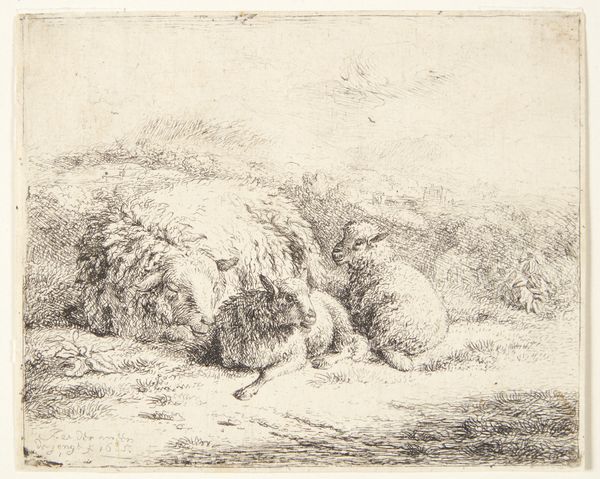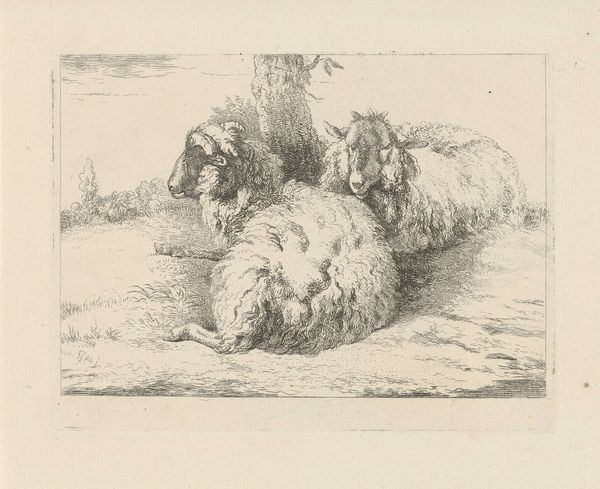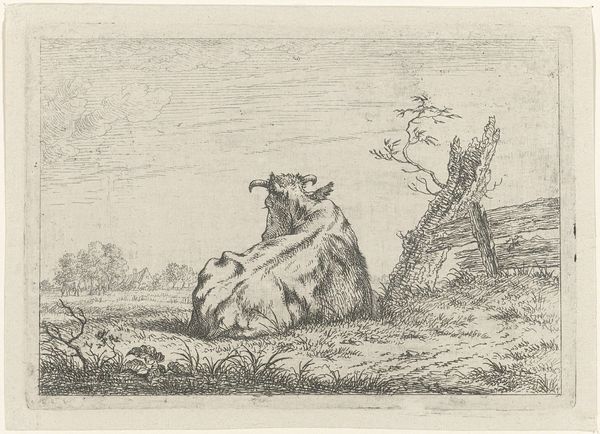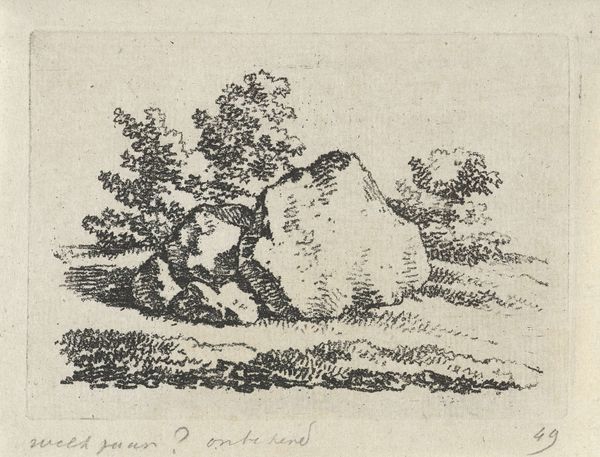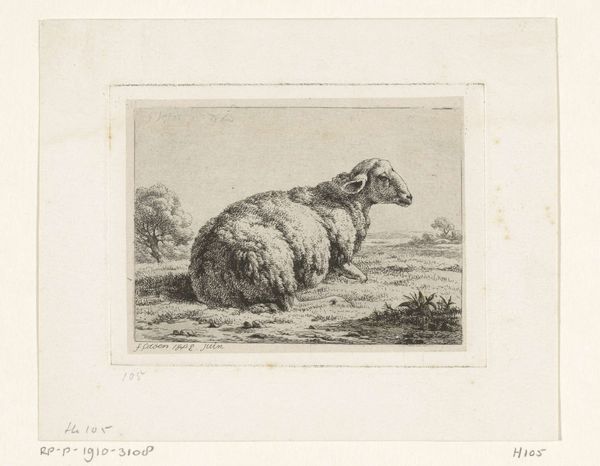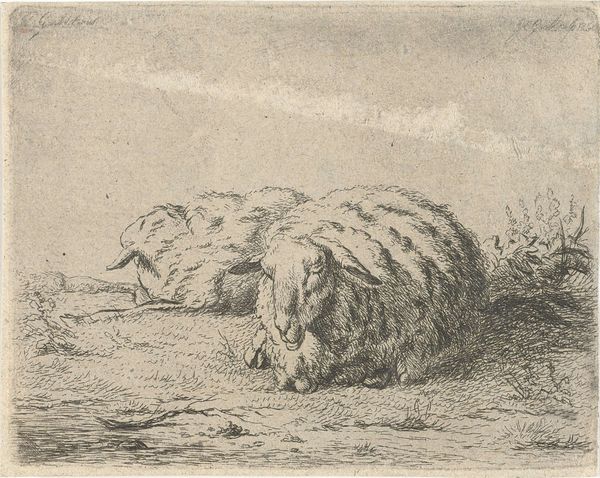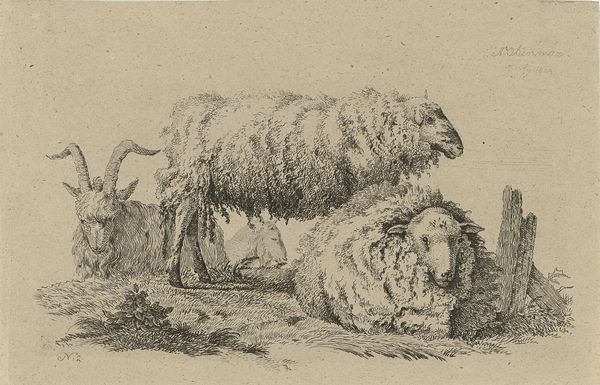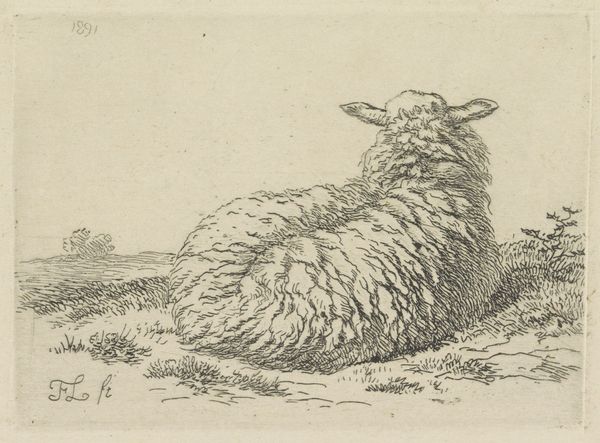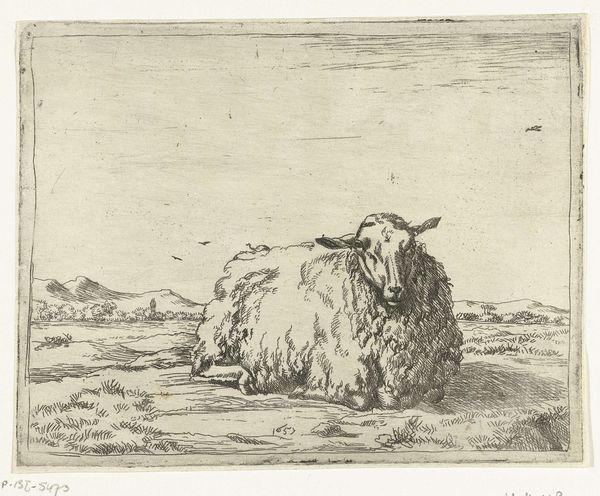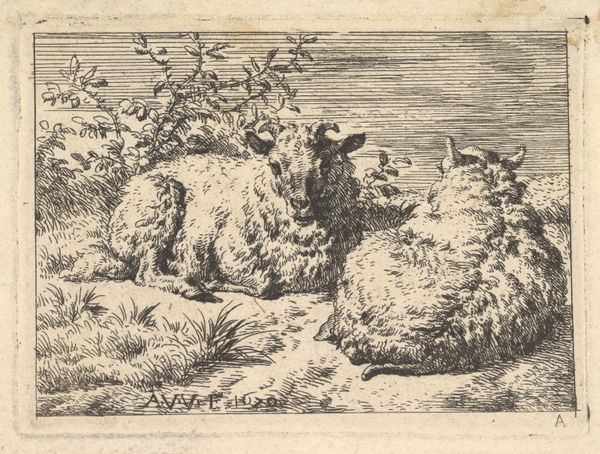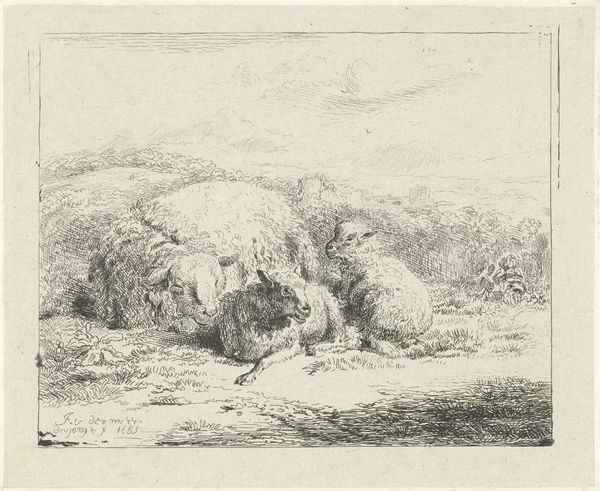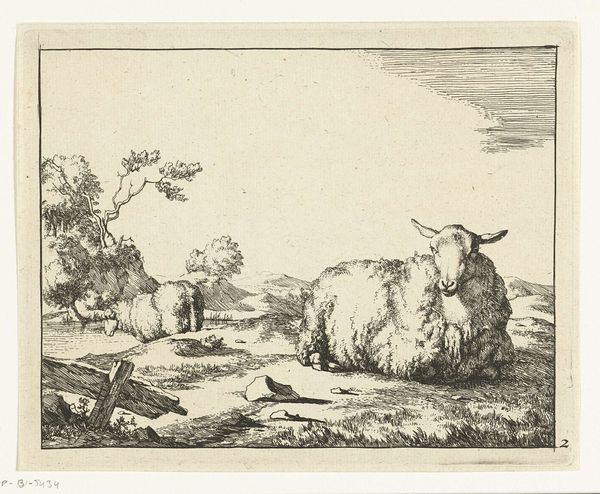
drawing, graphite
#
drawing
#
pencil sketch
#
landscape
#
graphite
#
realism
Dimensions: height 100 mm, width 140 mm
Copyright: Rijks Museum: Open Domain
Curator: Look at the texture! I’m immediately struck by the artist’s mastery of graphite in Frans Lebret’s, “Liggend schaap en twee lammeren,” created in 1894. The subtle layering captures the essence of the sheep’s wool. Editor: It does evoke a sense of calm, doesn’t it? But viewing it now, through the lens of our interconnected world, one has to question the depiction of this quiet, rural scene amidst broader societal narratives around industrialization, labor, and even ecological change. Curator: Yes, context is everything. During this era, depictions of rural life were romanticized, acting almost as a form of escapism from rapidly industrializing society, as you pointed out. How does the method used by Lebret himself affect that social situation? Editor: Absolutely. Consider graphite's composition: carbon, transformed through industrial processes for artistic purposes. Even Lebret’s choice of the readily accessible pencil ties this seemingly pastoral image to that broader cycle of production and distribution shaping labor relations, and social space in the 19th century. This medium opens up dialogues surrounding value and the commodification of art materials themselves. Curator: True. I agree that the pencil seems democratic; it makes the means of production appear more attainable, accessible, which in turn relates to class. This relates not only to the materials and labor practices but also how animals in agrarian settings are perceived in socio-economical situations. I'm looking at these animals and how it relates to production of labor and resources, wool etc... Editor: Precisely! This drawing operates on so many levels. Beyond aesthetics, there's a socio-economic dimension: examining how even bucolic scenes tie into broader debates about production, ownership, labor conditions and resource management. The pencil as medium becomes the intersection point between artistic expression and the material conditions underpinning society. Curator: Fascinating. So it becomes a portal of sorts—connecting the peace of the field to complex histories. It shows how looking into even these quieter, rural landscapes provides invaluable insight for those willing to engage in critical discourse about their relationship to our lived existence. Editor: Exactly. It’s a valuable reminder that art doesn't exist in isolation. Instead, it's a reflection and product of human choices, the material world around it, as well as historical, industrial and sociological changes across space and time. It allows for interdisciplinary discourse that transcends eras, and socioeconomic differences.
Comments
No comments
Be the first to comment and join the conversation on the ultimate creative platform.
